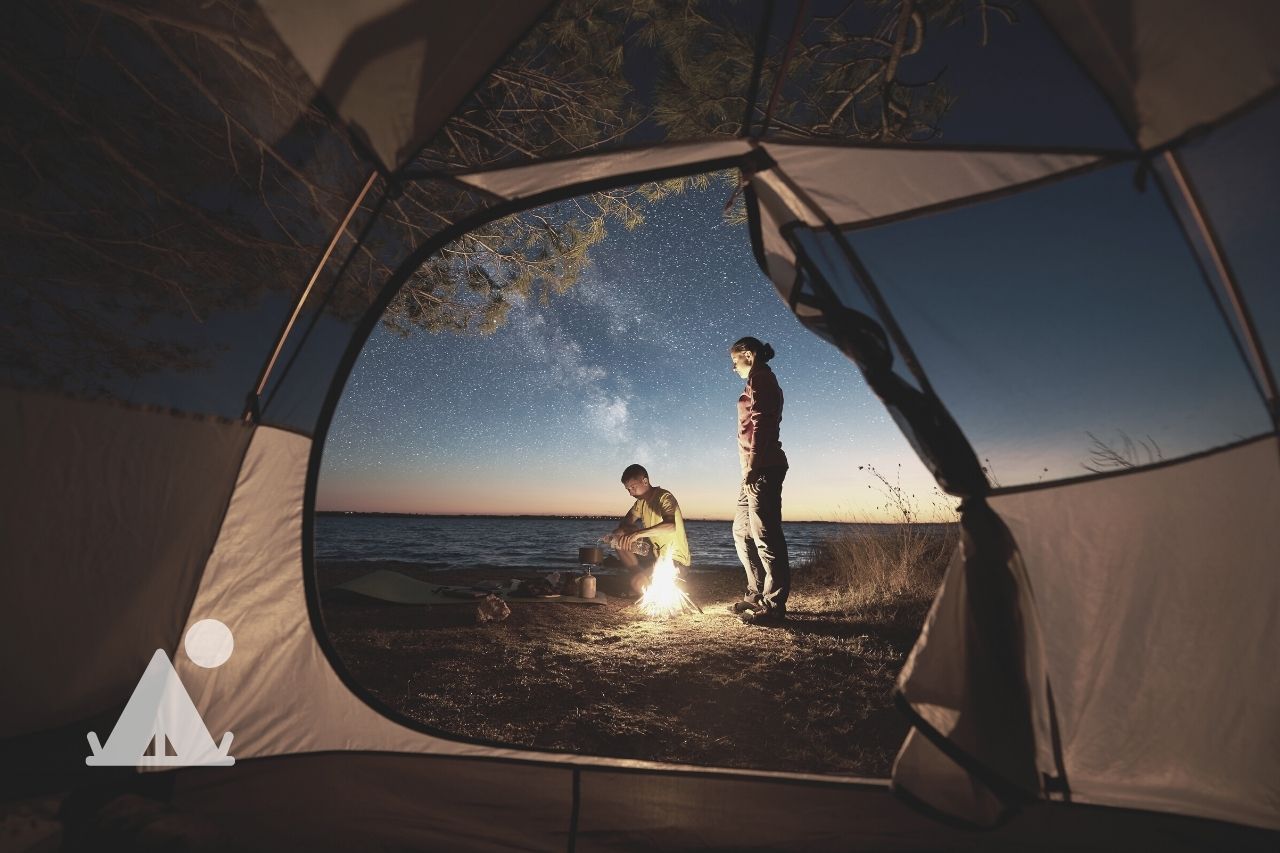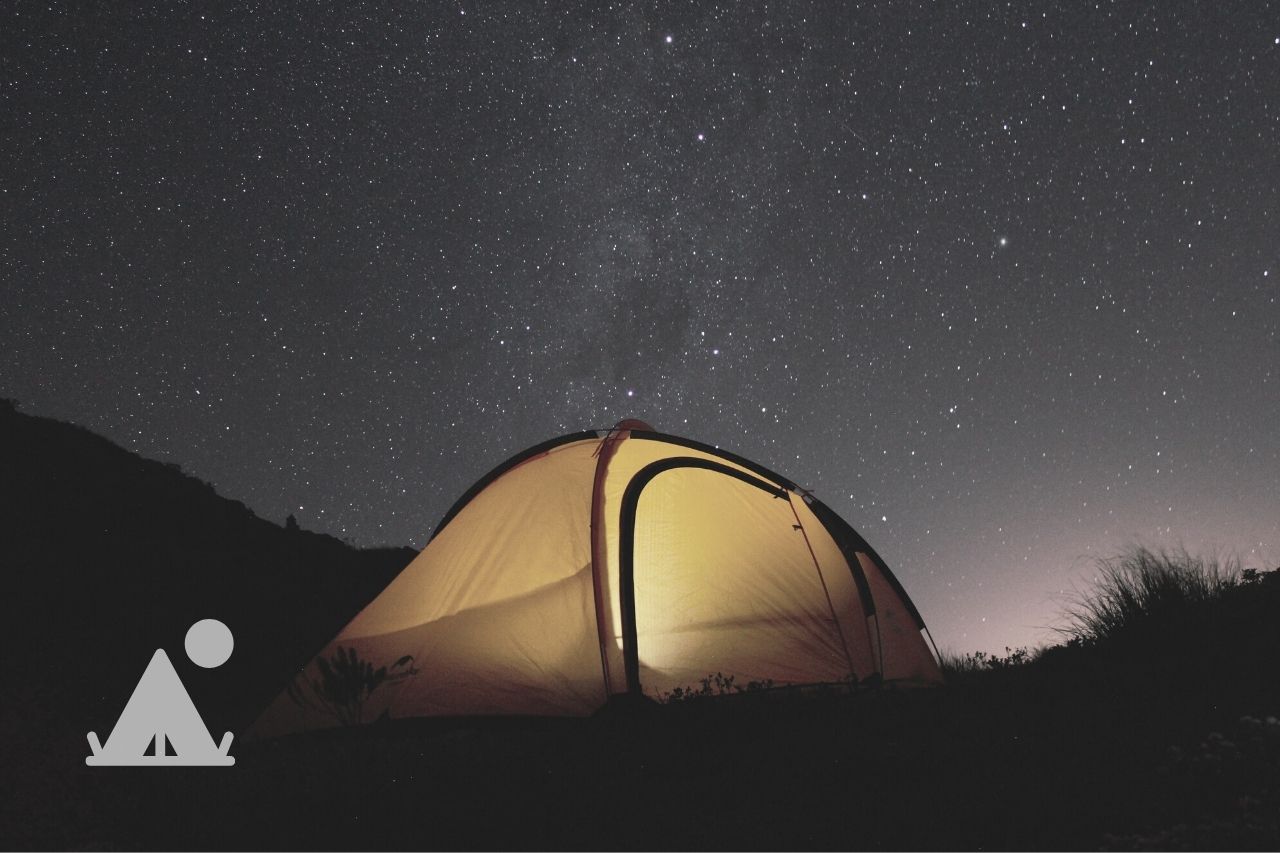A sleeping bag makes it easier to sleep through a cold night when camping. But you can make do without one. We have some tips on how to stay warm camping at night without a sleeping bag.
Can You Camp Without A Sleeping Bag (and Which Are The Best Alternatives)?

A sleeping bag is usually the most convenient way to sleep when camping, but it is not absolutely necessary.
If you find sleeping bags too bulky, too warm, or you tend to feel a bit claustrophobic in one, there are other ways to sleep warm while camping.
Here are the best alternatives to a sleeping bag.
- A quilt is one of the most versatile alternatives to a sleeping bag. You can spread it and use it like a blanket or cinch it closed and snuggle in it like you would a sleeping bag. Quilts are also lighter and easier to pack compared to a sleeping bag.
- A camping blanket is an even lighter alternative. All you need is a sleeping pad or mattress and a warm camping blanket (ideally down or wool). The only downside is that a camping blanket is not as good as a sleeping bag or quilt in very cold weather. Most are rated to a minimum of 40-50 degrees.
- A bivy bag or shelter is popular with hikers who want to travel ultra-light. It replaces a tent. A bivy bag is typically used along with a sleeping bag, but you can use it without the sleeping bag if it’s a warm night. Instead, you can cover yourself in a lightweight blanket with a sleeping pad underneath.
- A hammock is another lightweight alternative to a tent. You don’t need a sleeping bag in a hammock. You can use a quilt or blanket instead.
The main disadvantage of most of these alternatives is that they don’t work very well when temperature drops down to single digits.
The wrap around design of a sleeping bag makes it really good at keeping you warm.
So if you do a lot of winter camping but don’t want to use a sleeping bag, you’ll need to take extra measures to stay warm.
How To Stay Warm Without A Sleeping Bag

1. Choose the Right Sleeping Bag Alternative
The first step is to decide which alternative you’ll go with. If it’s summer, all the alternatives we’ve listed above can work.
But if it’s cold or snowing, a quilt is the best alternative to a sleeping bag.
You can find a quilt rated for very low temperatures up to 0 degrees. For instance, Outdoor Vitals has options for 0, 15 and 30 degrees.
If you typically camp in warmer weather (40-50 degrees or higher), you can use a wool or down camping blanket.
2. Use A Sleeping Pad or Mat for Insulation
A sleeping pad or air mattress is essential whether you use a sleeping bag or some other alternative. As long as you are sleeping on the ground, you need insulation to prevent loss of body heat to the ground.
Air is one of the best insulators, which is why an inflatable or self-inflating sleeping pad is great for staying warm. An air mattress, though bulkier, is also good for insulation.
The air traps body heat, keeping you warm through the night.
When you buy a sleeping pad, make sure it has an R value of 5 or higher if you are planning to do some winter camping. A higher R value indicates better insulation. An R2 or R3 sleeping pad is perfect for moderately cold nights.
3. Insulate Your Tent
Insulating your tent will keep you warm even if you just have a camping blanket.
You can buy an insulated tent for winter camping, but those tend to be pricey. The best alternative is a 4-season tent, also called a winter tent.
It will not be insulated, but it’ll have very little mesh fabric to let in the cold. It can also withstand heavy snow and strong winds.
For non-winter camping, a 3-season tent will do.
The most important area to insulate is the ground. That’s where most heat is lost.
A ground tarp or footprint can prevent too much heat loss while also protecting you from bugs and water. Lay your sleeping pad on the tarp for additional insulation.
Tip: Fold the sides of the tarp against the inside of the tent to seal any gaps at the bottom of the tent.
If you don’t have a ground tarp, a rug or even an old carpet can also work.
If it’s really cold, you can also insulate the walls and roof of the tent using reflective foil insulation. The reflective surface reflects most of the heat falling on it back inside the tent to keep it warm.
Some foil insulation sheets have air bubbles for improved insulation.
4. Dress Warm
Dressing warm doesn’t mean sleeping in a thick jacket. You actually want to sleep in as few clothes as possible to prevent sweating.
Sleep in light, breathable, and warm clothes such as thermal underwear. A set of fleece PJs is also great. If it’s very chilly, add a lightweight hoodie on top for extra warmth.
Be sure to cover your head as well using a hoodie, balaclava, or a knit. A lot of body heat is lost through the head.
5. Use a Heat Source
With a sleeping bag, you usually don’t need a heat source. Your body heat and the sleeping bag’s insulation are enough to keep you warm.
Without a sleeping bag, you may need the extra warmth on cold nights.
One of the best options is a 12V camping electric blanket or pad. These use very little electricity, so you can power it with a small portable power station.
Electric blankets are also safe since they don’t produce any harmful gasses.
Another option is an electric heater, either radiant or convection. But these tend to use more power and will quickly drain a power station.
You can also use a propane heater, but make sure you have good ventilation. You’ll also need a carbon monoxide alarm in your tent.
If you are on a budget, try a hot water bottle.
6. Pick The Right Place To Pitch Your Tent
If the temperatures are low, then it’ll be cold wherever you pitch your tent. But setting up your tent in an open area exposed to wind or snow can make it even colder.
You want to be as sheltered as possible. Use trees, bushes, or a natural rock formation to shield your tent from the worst of the cold.
If there isn’t enough natural windbreak, set up your tent beside your car or truck, making sure the vehicle is in the path of oncoming wind.
Here’s a video talking more about choosing the right spot to camp and what to consider.
7. Hydrate and Eat Well
A full stomach makes for a warmer body. High protein meals are especially good for producing sustained warmth through the night.
Make sure you also stay hydrated with water and other beverages. A mug of hot milk or herbal tea just before bed quickly increases your core temperature and makes it easier to fall asleep.
At What Temperature Do You Need A Sleeping Bag?
When it comes to staying warm, there’s no beating a sleeping bag. At some point when it gets really cold, it makes more sense to just get a sleeping bag.
The good news is, most people don’t do extreme winter camping or go to the arctic to camp where temperatures drop down to below zero.
Above 40F, you can make do with a just blanket.
If the temperature drops down to around 20F, a quilt is recommended.
Once temperature begins to drop into the teens and single digits, it’s time to think about that sleeping bag.
When it gets to 0 and under, definitely switch to a sleeping bag. It’s easy to get a 0 degree sleeping that keeps you cozy in snowy weather. There are also sleeping bags rated as low as -40F.
Can I Use Blankets From Home For Camping?
Yes, you can carry blankets from home for camping instead of using a sleeping bag.
Note, however, that home blankets are not rated for use in really cold conditions outdoors. They may be warm in your well insulated bedroom, but feel like a thin sheet of paper in your tent.
Regular blankets are only ideal if you expect a warm night.
To stay warm, we recommend a camping blanket. Camping blankets have better insulation and can be used in much colder environments.